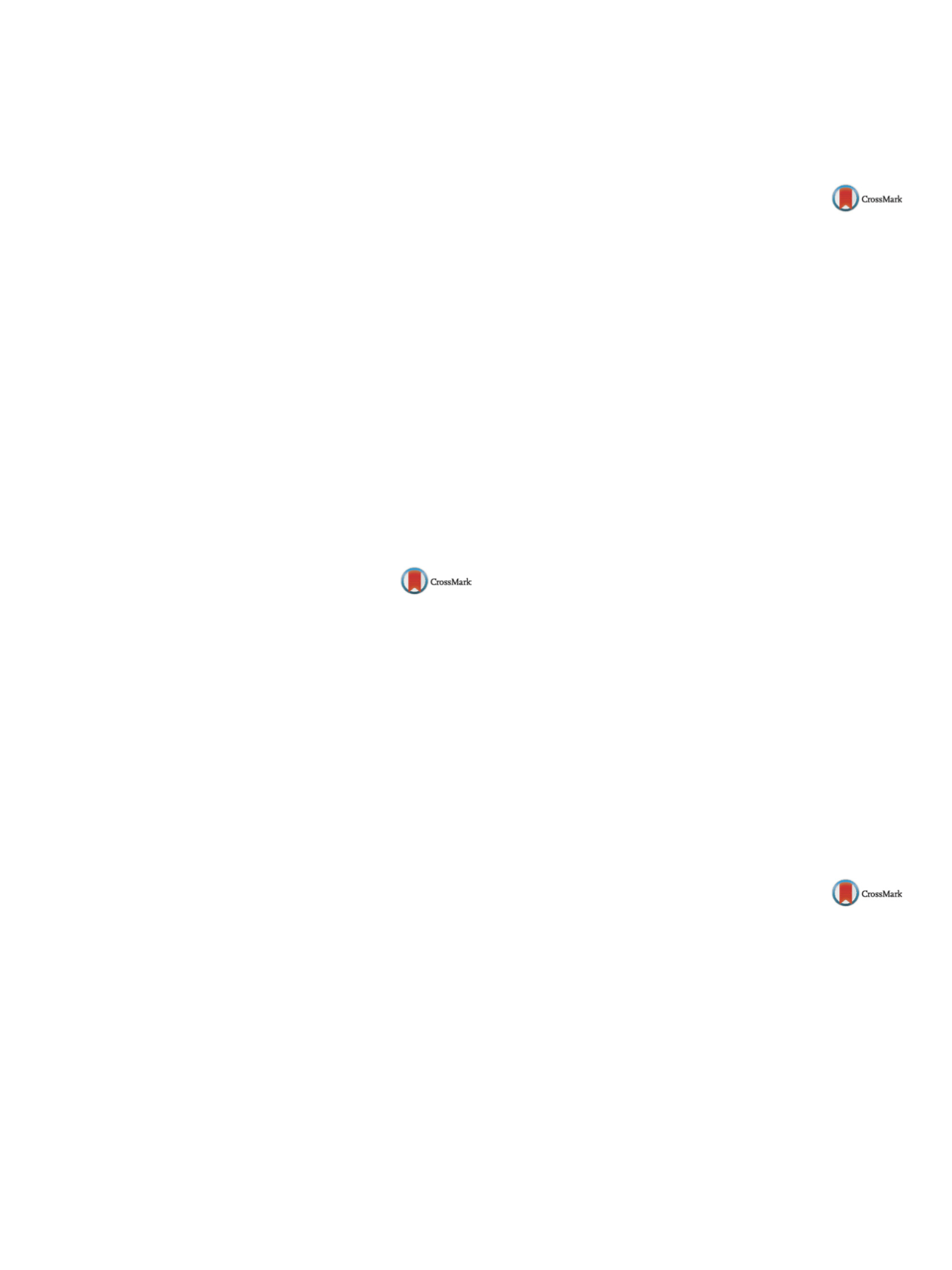

25th European Congress of Psychiatry / European Psychiatry 41S (2017) S772–S846
S781
special role in society. Presented behaviours, reactions to stressful
situations, unaccepted emotional states that appear to bemaladap-
tive, are often intensified by the rules of monastery life.
Objectives
The aim of this investigation was to uncover the most
significant issues in terms of the specificity of therapeutic work
with nuns.
Methods
The subjects were 12 patients (nuns) with the diagnosis
of depressive-anxiety disorder (F41.2 according to ICD-10 criteria).
Over the course of the last 10 years (since 2005) we observed the
therapy processes of 12 nuns. The psychotherapy group consists of
12 patients at our ward. Every time there was only one nun in the
group.
Results
This study gives an overview of issues and problems
reported by the nuns: their sex significantly determines their posi-
tion in the community of consecrated sociality, their obligations to
perform specific work, the rules to follow as well as the resulting
consequences for the functioning of mental health.
Conclusions
In the process of psychotherapy is important and
necessary to distinguish between theological and psychological
aspects, between what is secular and what is spiritual. The psy-
chotherapy group’s as well as the therapist’s perception of a nun
is of special importance as it is sometimes difficult to distinguish
between her social role and her needs, desires, difficulties and con-
flicts as a human being.
Disclosure of interest
The authors have not supplied their decla-
ration of competing interest.
http://dx.doi.org/10.1016/j.eurpsy.2017.01.1485EV1156
Outcomes assessment: Psychometric
properties of the Spanish adaptation
of the outcome questionnaire (OQ-45)
P. Penas
∗
, I. Iraurgi , S. Gorbe˜na , B. Matellanes , M. Montero
University of Deusto, Department of Psychology, Bilbao, Spain
∗
Corresponding author.
Introduction
The outcome questionnaire (OQ-45) has been one
of the most frequently used instrument to measure clinical out-
comes in psychotherapy. Probably due to its subscale structure, its
applicability for a variety of disorders and life struggles, its sen-
sitivity to change by repeated measurements and its predictive
ability. Given its popularity, OQ-45 has been translated into several
languages.
Objective
As the Spanish version has not been published, through
this poster it is going to show the reliability and the dimensional
structure of the OQ-45.
Method
One hundred and thirty-nine patients in clinical settings
have completed the Spanish version. Three different confirmatory
factor analysis have been calculated to analyze the construct valid-
ity.
Results
The Cronbach Alpha of the instrument was adequate
.92, but also, in the three dimensions: symptoms distress (.90),
interpersonal relations (.78) and social role (.66). Through the
CFA was proved that the Four-factor bi-level model structure
[
2
(900)
= 3930.47,
P
< .001, AGF = .86, CFI = .91, RMSEA = .061(.049 to
.073)]suited appropriately, in fact, more properly than the three-
factor correlated or the three-factor with a second order factor
models.
Discussion
The three-factor bi-level model structure of the OQ-
45 is confirmed indicating an empirically and clinically relevant
measure of client functioning. In this model each item loaded on
one of the three subscales originally created. Besides, each item
also captures common variance represented by the general factor
of overall maladjustment, where this factormay indicate the degree
to which respondents are functionally impaired. Thus, OQ-45 is
an instrument that could be used for monitoring treatment effi-
cacy and for making informed decisions about clinically significant
changes.
Disclosure of interest
The authors have not supplied their decla-
ration of competing interest.
http://dx.doi.org/10.1016/j.eurpsy.2017.01.1486EV1157
A prospective intervention in patients
with complicated grief
M. Pinheiro
1 ,∗
, N . Carvalho
2 , D.Mendes
2 , J. Rocha
31
Centro Hospitalar do Tâmega e Sousa CHTS, Departamento de
Psiquiatria e Saude Mental DPSM, Penafiel, Portugal
2
CHTS, DPSM, Penafiel, Portugal
3
CESPU, Psicologia, Gandra, Portugal
∗
Corresponding author.
Introduction
Most reactions to grief are adaptive. However, there
is the possibility that some individuals present a complicated grief
disorder, where there is a pathological intensification of symptoms
lasting more than 6months, deserving special treatment.
Objectives/aims
Evaluate the effectiveness of two types of
intervention in complicated grief: group intervention (GI) and
cognitive-narrative (CN) therapy.
Methods
Patients in a complicated grief process were selected
(
n
= 70), and distributed in three groups: cognitive–narrative ther-
apy group (CNTG), group intervention group (GIG) and a control
group (CG). Inclusion criteria: adults, with a reference to mourning
situation, with personal meaning, for over six months and results
in ICG
≥
30points (cutoff). The Inventory of Complicated Grief (ICG),
the Center for epidemiologic studies depression scale (CES-D) and
the trauma questionnaire (ICD-11) were used. Follow-up was per-
formed 3months after the end of each intervention. Data analysis
was performed using the statistical package from social sciences
(SPSS 20).
Results
With respect to complicated grief symptoms (CGx) and
depression symptoms (Dx) there were statistically significant dif-
ferences between the CNTG and the CG, but not with the GIG. There
was no statistically significant effect in post-traumatic symptoms
(PTx), even though both interventions had a slight decrease. When
the CNTG and the GIG were directly compared, there was only a
statistically significant difference between PTx.
Conclusions
In our single center cohort, CNTG was a more effec-
tive intervention in complicated grief patients for CGx and Dx
reduction. For PTx, no intervention was superior. Larger multi-
center studies are needed to validate these results.
Disclosure of interest
The authors have not supplied their decla-
ration of competing interest.
http://dx.doi.org/10.1016/j.eurpsy.2017.01.1487EV1158
Cognitive behavioral therapy and
acceptance and commitment therapy
as augmentation treatment for
paediatric autoimmune
neuropsychiatric disorders associated
with streptococcal infections
(PANDAS): A case report
A. Pozza
University of Florence, Department of Experimental and Clinical
Medicine, Florence, Italy
Introduction
Paediatric autoimmune neuropsychiatric disorders
associated with streptococcal infections (PANDAS) are a subgroup
of conditions including obsessive-compulsive disorder (OCD),
tic disorders, pre-pubertal and sudden onset, temporal associa-
tion between streptococcal infections and associated neurological
abnormalities. Some strategies were developed, including the
use of antibiotic prophylaxis to prevent streptococcal-triggered
exacerbations, and immunomodulatory interventions for the man-


















